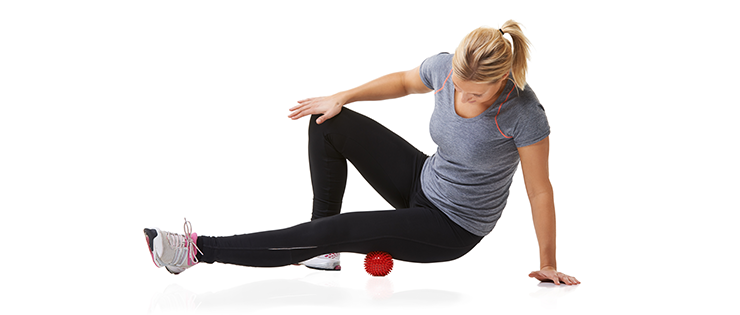
Trigger balls have almost become a staple addition to ones gym bag over the last few years which actually makes me really excited because I think people are slowly beginning to understand the importance of flexibility and mobility as integral parts of a good training program.
The majority of my clients will have been given at least one (if not more) trigger ball exercises at some point during their recovery because it’s such an effective way to reduce muscle spasm, help with pain relief and assist with general recovery and wellbeing.
I have found a common theme of questions when it comes to introducing someone to the wonderful world of trigger balling.
Why do we use a trigger ball?
We store tension in many of the soft tissues throughout the body. Areas of tension can be painful but can also inhibit the function of a muscle or joint which in turn may lead to injury. The targeted pressure of a trigger ball can de-sensitise and release tension from these soft tissues which can really aid in injury management but also be a useful tool to loosen muscles that are just tight from day to day life.
How do you actually use a trigger ball?
Generally the idea is to place the ball between your body and a firm surface. Some spots can be done lying on the ground and others in standing using a wall. There are many techniques and different ways to release different areas. If you are really unsure I would recommend asking your physio for guidance.
Should trigger balling be painful?
There will often be an element of discomfort involved but it shouldn’t be really painful. Find a level of ‘tolerable discomfort’ whereby you can maintain a conversation with your gym buddy or control a deep breathing cycle. Anything above this I would suggest modifying the position slightly to reduce the pain or pressure.
How long should I trigger ball for?
A little bit everyday is far more beneficial that one big session per week. 5-10 minutes is ample time to begin effectively releasing a few key spots.
Where am I meant to use my trigger ball?
Every individual will have different areas of tension depending on work, exercise and lifestyle factors. There are definitely some common areas that are prone to holding more tension. Often in runners it’s the calves and glutes, while for office workers it may be the upper back, neck and shoulders. As a beginner it can be interesting to explore all areas, you may be surprised not only at where you find tension but how it can differ from side to side. Remember trigger ball release is for the soft tissues so steer clear of bony areas (it’s not a comfortable experience)
When should I be using my trigger ball?
In my opinion it doesn’t really matter. Whenever is the most convenient to ensure that you actually get it done. I do all of my trigger balling at home in front of the TV so I can completely relax and not be rushed, and his means I often do it for longer!
What’s the best trigger ball?
This is totally personal preference. I use a smooth ball just slightly smaller than a tennis ball. It’s a versatile size that can be used comfortably on all areas. The spikey ball is a little more intense but some people enjoy that. You can always have on of each and play around with them both; you may find one works on some areas while the other works elsewhere.
Active RX Physio has a weekly instagram post (@activerxphysio) with videos how to trigger ball different areas of the body. It may be a good starting point for those who are not sure on where to begin.